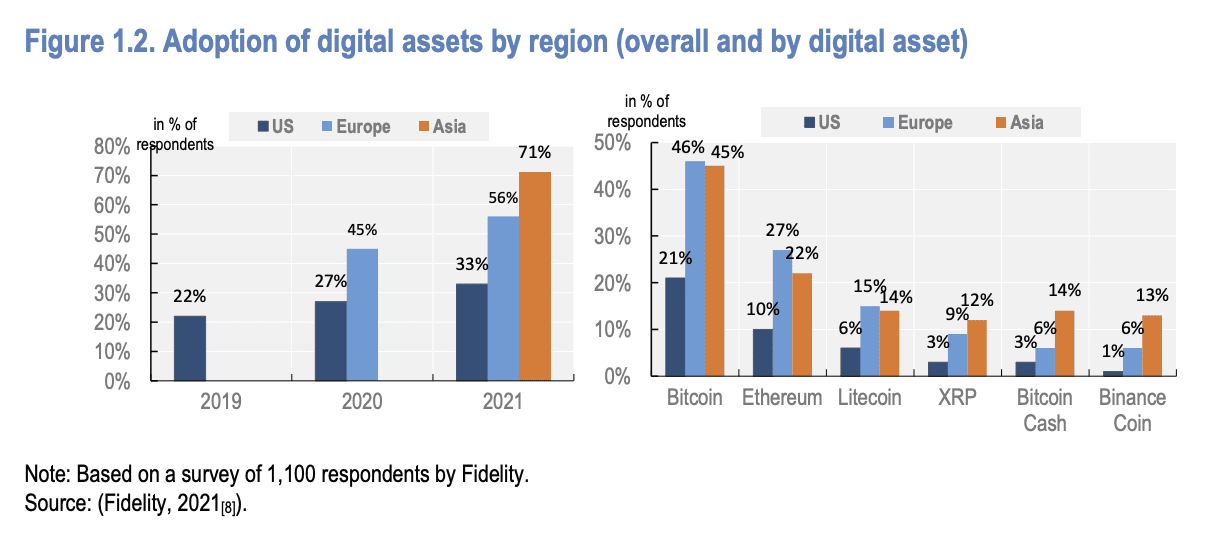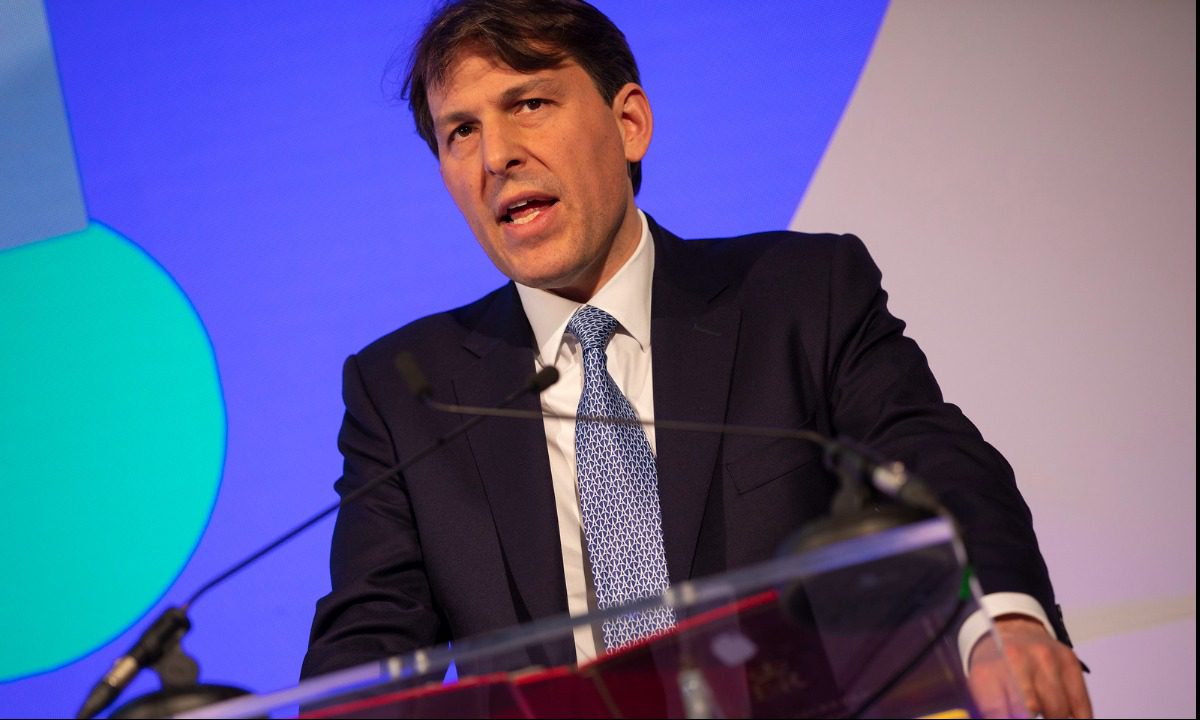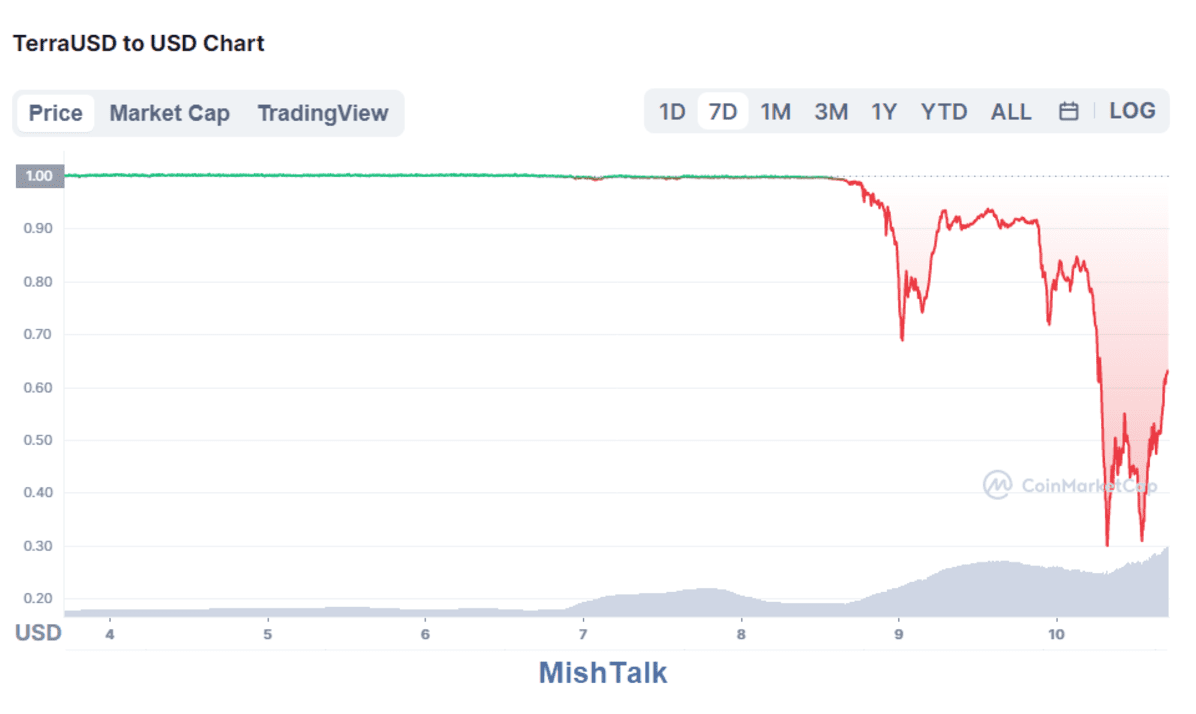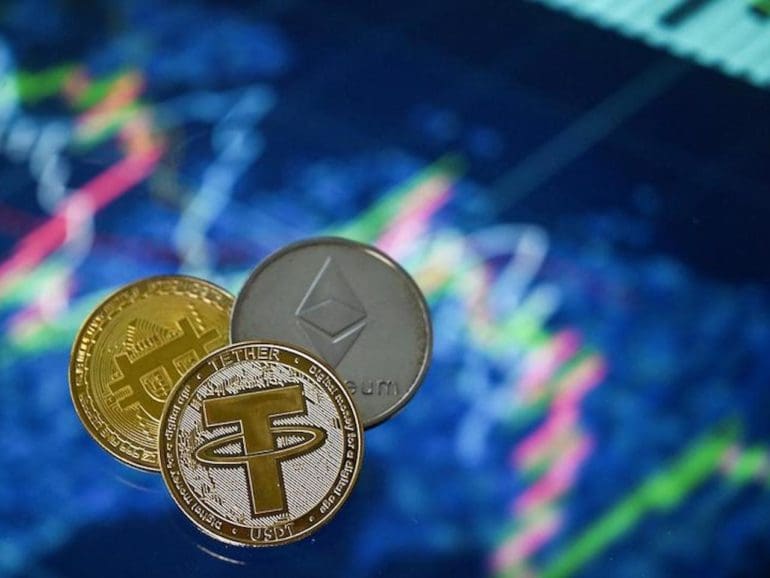Cryptocurrency assets are moving into the mainstream as DeFi gains institutional recognition.
Traditional Finance (TradFi) is transforming, and with this comes opportunity and challenges.
In November 2021, the global market cap of cryptocurrencies peaked at almost over $3 trillion, more than double the amount at the end of 2020. Despite recent market crashes, institutional investors remain bullish, 80% believing that crypto assets will take over traditional investment vehicles in the next decade.
Last year, it was reported that 70% of institutional asset managers planned to develop solutions for digital assets. In the first half of 2022, we have demonstrations of this movement. Partnerships between digital asset fintechs and asset management giants have plagued the headlines, each searching for a slice of the digital asset pie.
However, if the recent crashes have taught us anything, they have solidified the volatile risk of digital assets in investors’ minds. The rapid increase in popularity of the asset class has left regulators lagging, creating a ‘wild west’ of uncertainty and Ponzi schemes.
Three main drivers for growing investor demand
The OECD Institutionalisation Of Crypto-Assets And DeFi–Tradfi Interconnectedness report published earlier this year identified three main drivers for growing investor demand in crypto assets.
- The search for yield in a prolonged low-interest rate environment, speculative forces, and a fear of missing out.
- The possible use of crypto-assets for diversification and portfolio optimization given a perceived uncorrelated nature of returns.
- Despite empirical analysis showing that main crypto-assets have not performed as effective inflation hedges, the perceived benefits of crypto assets as an inflation hedge.
Despite limited quantitative data indicating the level of crypto asset investment, the OECD found that the institutional investors recording the largest rates of investors were crypto funds, VC funds, and hedge funds. Long-term investors such as pension funds continued to view the assets negatively due to their high risk. They found that the funds could indirectly allow investors to hold such risk by investing in companies whose assets are majority bitcoin or who derive most of their earnings from bitcoin mining, lending, or transacting.

Worldwide adoption was found to have increased by 880%, with Asia seeing the highest increase but emerging markets also showing increased interest. Cybersecurity, transparency, and regulatory treatment concerns were investors’ most common issues with the new asset class.
One of the most significant barriers to entry revolves around a lack of knowledge of DLT infrastructures underlying crypto-assets. Most institutional investors reported a surface level to moderate level of understanding.
Regardless, last year Institutional investment showed the highest transaction volumes during the bull market, tapering off towards the end of 2021, while professional and retail investment remained stable.
DeFi instruments shown as beneficial for TradFi
In addition to the speculative appeal of cryptocurrencies, DeFi has proposed some significant benefits and tools for TradFi.
DeFi can streamline processes using automation and smart contracts, reducing management levels and increasing value. Many incumbents, such as Goldman Sachs, have announced the investigation of digital assets and tokenization, recognizing their benefits.
Additionally, a clear opportunity for cross-border payments has been created with the prospect of digital currency. Running 24/7, 365 days a year, cross-border remittances using digital currencies have shown advantages in transaction speed. So much so that many nations are now looking into Central Bank Digital Currencies (CBDCs) as a stable, regulated tool to facilitate them.

Furthermore, the transparency and security of the blockchain infrastructure underlying DeFi continue to show its potential in many use cases within TradFi and other centralized structures.
Due to these benefits, governmental interest has also peaked, with nations like the UK vying to be “a global hub for crypto asset technology.”
DeFi continues to be in its relative infancy, and its innovation may have benefited from a lack of regulated constraints. However, as it becomes more institutionalized, a degree of supervision is needed to curb risks to the broader economy. This balance between fostering innovation while protecting the economy from significant disruption poses regulatory complications.
Stablecoin bridge of DeFi and TradFi creates vulnerability
The lack of knowledge and concerns about transparency are critical points on which the level of risk of increased institutional interest in DeFi to the traditional finance sector could rely. The lack of clear guidelines and supervision within the space has left many institutional investors uncertain of the validity of their investments.
The OECD report states, “The current structure of crypto-assets markets raises questions concerning liquidity and price efficiency. Unlike traditional financial assets trading on regulated exchanges, crypto-asset markets consist of many non-integrated and independent exchanges without any provisions to ensure that investors receive the best price when executing trades.”
On large, stablecoins are seen to mitigate this risk, supposedly directly tied to stable assets or algorithms that offset the cryptocurrency’s volatility. However, the assumption that this is the case has shown the asset as a source of vulnerability in the DeFi structure.
The report continues, “Stablecoins are associated with a number of important risks related to high concentration in terms of issuers, weaknesses around transparency of reserves and lack of credibility, lack of clarity regarding redemption rights of holders as well as operational risks (e.g., cyber risk).”

Crashes of stablecoins earlier this year have brought such weaknesses into the limelight. Algorithmic stablecoins have shown issues, while controversy around the lack of clarity on assets backing other stablecoins highlights limitations.
“In a scenario where a major stablecoin loses its peg due to solvency issues related to the reserves backing the stablecoin or due to its under-collateralization, decentralized exchanges would go under severe stress. Liquidity pools would be forced to mass liquidations, disrupting DeFi markets,” states the OECD report.
This risk restricts the widespread usage of DeFi within traditional finance, and it goes on to explain, warranting appropriate regulatory and supervisory framework and standards. Implementing these could ensure appropriate protection levels for investors and financial consumers while supporting overall financial stability.
To this end, others have suggested that instruments such as a Central Bank Digital Currency would be more appropriate to foster DeFi practices in TradFi.
The UK and Europe lead regulatory attempts
In late June of this year, the EU announced an agreement on the MiCA crypto asset regulation, a leading step towards improving the environment for institutional investors.
The proposal covers the issuers of crypto assets, stablecoins, and the wallets and platforms where they are stored and traded. Although some individual nations had tackled the landscape with regulation, MiCa is the first attempt at addressing the issue on a broader scale.
In a statement, the European Council wrote, “??This regulatory framework will protect investors and preserve financial stability while allowing innovation and fostering the attractiveness of the crypto-asset sector.”
Stablecoin supervision forms a large part of the proposal and other digital assets, although NFTs continue to be excluded until further exploration.
The UK has also brought forth a proposed Financial Services and Markets Bill (FSMB) in late July 2022. This follows John Glen, Economic Secretary to the Treasury’s statement in April, which focused on cultivating innovation in crypto assets and Distributed Ledger Technology (DLT).
Like MiCa, the FSMB focused on stablecoins, providing a level of supervision and licensing requirements that could provide investors with protection.
Charles Delingpole, CEO and founder of Comply Advantage has applauded the regulatory step; however, he believes that “auditing smart contracts” would provide the industry with greater assurance.

Policymakers critical for sustained development
Institutional entities are increasingly attracted to the benefits the DeFi infrastructure could bring. However, as the adoption scales, so do the risks to the broader economy. Regulators could be instrumental in avoiding economic disasters in the future.
“Given the multitude of potential risks involved in these growing markets for crypto-assets and DeFi, there is a role for policymakers to evaluate such risks and consider policy action to address them,” concluded the OECD report.
“If crypto assets’ adoption continues to increase, the linkages between the traditional and decentralized finance markets may become stronger, possibly increasing the risk of spillovers to traditional financial markets and the real economy.”
The report suggested distinct points of focus:
- Promotion and encouragement of investor protection disclosures so investors can understand their investment risks.
- Monitoring the evolution of digital assets which bridge into TradFi and potential risk submission.
- Mapping and monitoring the ecosystem around DeFi, e.g., wallet providers, to better understand linkages with TradFi and associated risk.
- Improved data collection around institutional adoption of DeFi to enrich understanding of risk points.
- As a result of improved monitoring, the creation of clearer guidelines.
- Multi-jurisdictional communication and a coordinated approach to global regulation.


